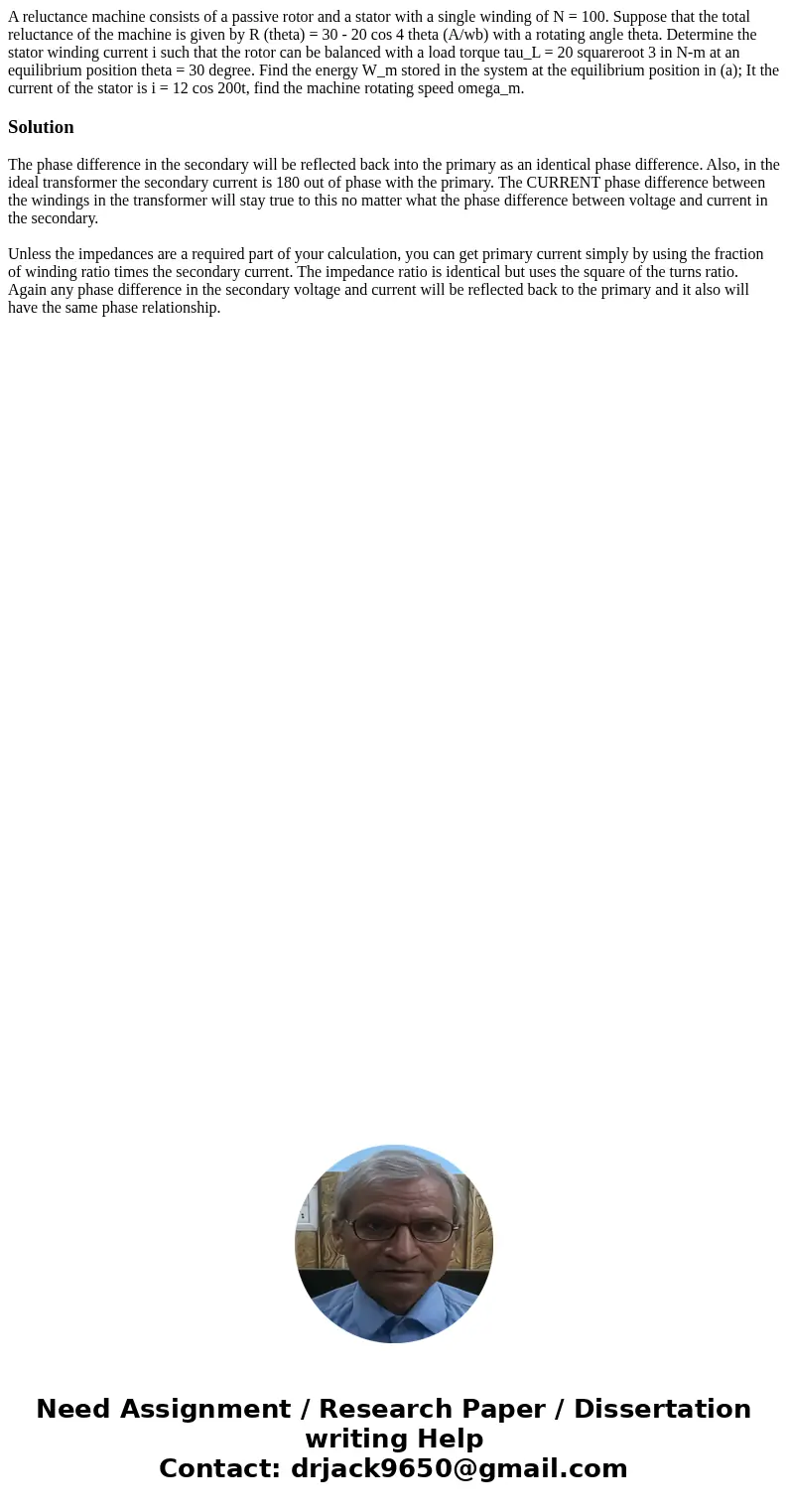A reluctance machine consists of a passive rotor and a stato
Solution
The phase difference in the secondary will be reflected back into the primary as an identical phase difference. Also, in the ideal transformer the secondary current is 180 out of phase with the primary. The CURRENT phase difference between the windings in the transformer will stay true to this no matter what the phase difference between voltage and current in the secondary.
Unless the impedances are a required part of your calculation, you can get primary current simply by using the fraction of winding ratio times the secondary current. The impedance ratio is identical but uses the square of the turns ratio. Again any phase difference in the secondary voltage and current will be reflected back to the primary and it also will have the same phase relationship.

 Homework Sourse
Homework Sourse